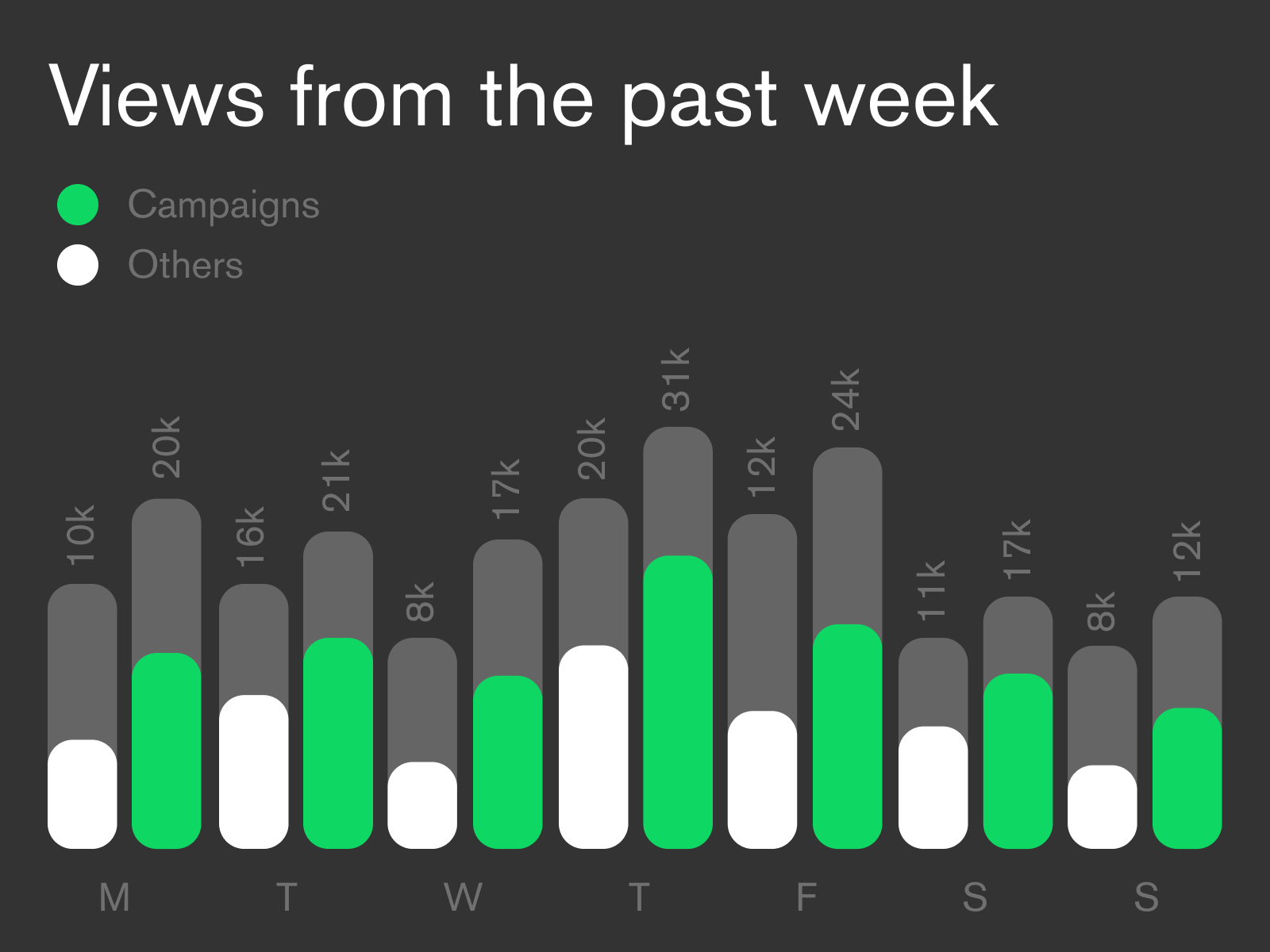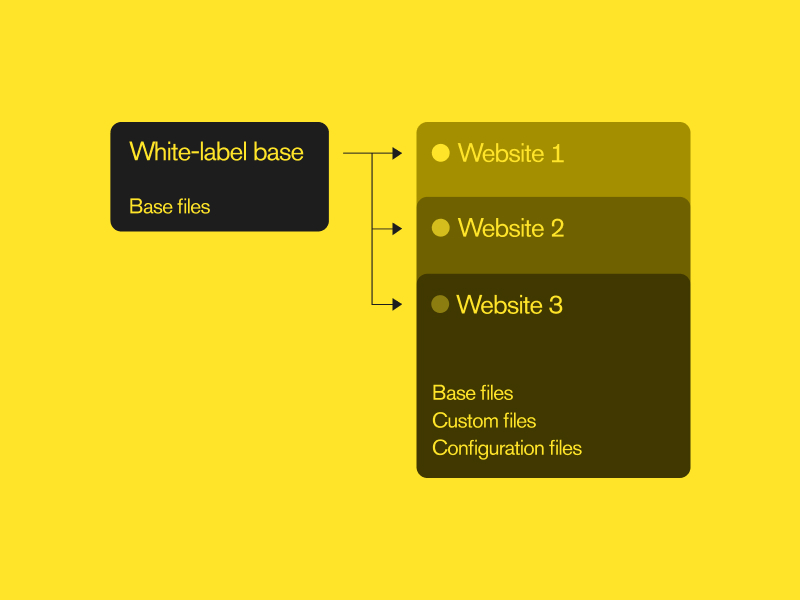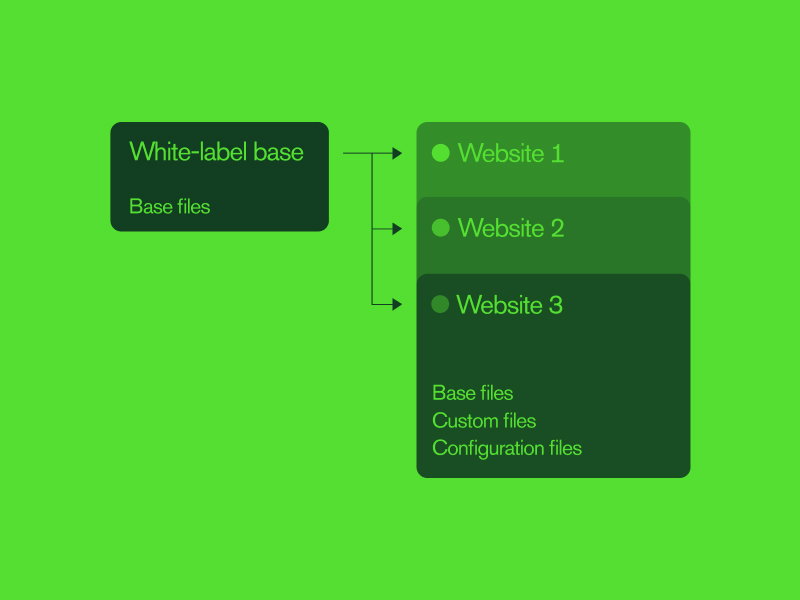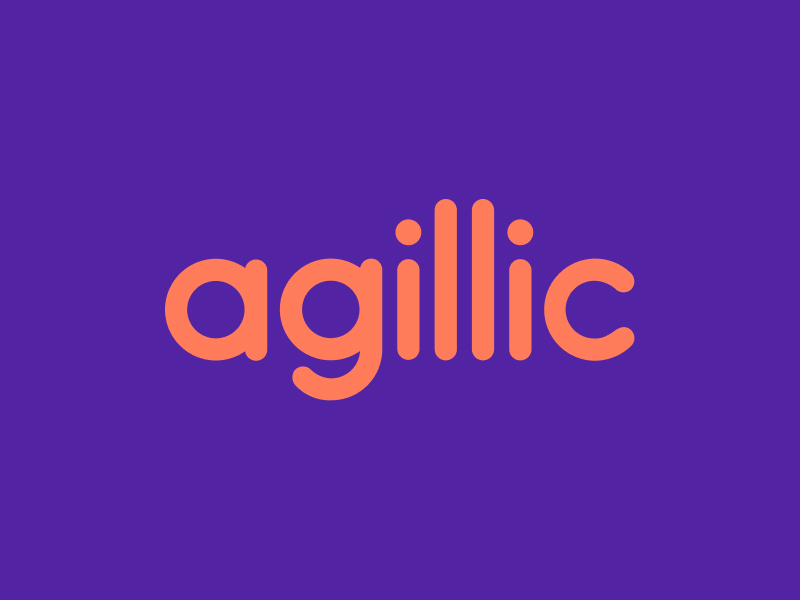What's interesting is when you take this core principle and adapt it to the digital world. It turns out that a white-label approach is a great way to accommodate business and technical goals, especially when developing websites. So in this article, we're going to explore the white-label software architecture pattern, and how it can bring huge advantages for both stakeholders and developers.
In this Part 1, we'll focus on the business advantages to a white-label solution and when it might be relevant. Part 2 will then dive into the technical implementation and tradeoffs from a development point of view.
The Why
When considering a white-label architecture for your project, you first have to ask yourself what you're trying to achieve. Because as we'll see, white-label works incredibly well for certain projects, while others won't necessarily achieve the same benefit.
One of the best use-cases for white-label is when you have several websites that are similar in nature/structure and data/integrations, but with vastly different visual identities.
Imagine you're a large media company, responsible for distributing various magazines to different audiences. You might have one magazine that's highly technical, another focused on lifestyle/design, and a third that's all about cars.
You decide to distribute these magazines online as well, so naturally, you need a website for each of them. And fundamentally, these sites are very similar. Their goal is to engage readers with articles and other forms of content, to convince them to purchase a subscription. But they obviously need to have a different "look and feel" to appeal to their varying audiences.
Another example could be if you're an organization responsible for managing different football clubs. Again, each club needs a website with information about the players, news from the club, match statistics, etc. But you definitely don't want your sites to look the same (or the fans just might start a riot).
These are just a few examples of where a white-label solution could be a great choice. While these sites have a similar nature and structure, they still require vastly different visual identities - and this is where a white-label solution really shines.
White-label advantages
One of the biggest benefits (and reasons to choose a white-label architecture) is maintainability. Even though you're using multiple codebases, a lot of the code is shared among them. This makes it a lot easier for developers to maintain multiple websites at once. It's also easy to publish updates to all the sites, without having to copy/paste changes across multiple projects.
By sharing much of the code across projects, new projects are never starting from scratch, so you can launch new sites with a fresh coat of paint incredibly quickly. And from a business perspective, you can use the white-label "base" as much as you want at a minimal additional cost per site. This helps save production costs and streamline product lines, which is especially useful at scale.
Now it might sound like this forces all your sites to function identically, which may not always be what you want. It's common that changing requirements forces a site to "branch out" and add custom functionality down the road - while still wanting to receive updates from the white-label base. Fortunately, the right technical implementation makes this a breeze (more on that in the "Technical implementation" - Part 2 of this article).
Another advantage is that you can host and deploy each project by itself. While the sites share a lot of the same code, each site still has its own deployment flow. This makes the entire system more resistant, as a single bad deploy or human error only impacts one site at a time. Compared to a single application supporting multiple sites, where a deployment issue potentially could take all your sites down at once!
These are some of the main advantages of white-label, so let's take a look at how we can put them into practice:
White-labels at Dwarf
The media company example mentioned earlier is actually one of our clients with specific requirements and problems that were perfectly solved by a white-label approach. The same goes for the football management organization, Divisionsforeningen, who needed a platform to efficiently support all their different clubs.
Furthermore, we've created a white-label solution for the TV2 Regions that all needed a familiar TV2 structure, while still retaining their own look with custom functionality for the different regions.
We've also implemented a similar solution for another one of our clients, a real estate investment firm with multiple popular shopping malls in their portfolio. The malls all needed their own website, with similar functionality, but with custom branding for different target groups.
These are just some of the cases where a white-label solution made sense for our clients, but it's also a common pattern among e-commerce websites in general. The Salling Group, for example, uses a white-label architecture with their various brands like Føtex, Bilka, and BR Legetøj to create unique experiences that still feel familiar and work similarly.
Conclusion
These are just some of the examples where a white-label solution makes sense from a business perspective, but there's obviously a lot to consider before deciding on an architecture like this. The nature of your business requirements, the scale of your projects, and the longevity of the solution are all important to keep in mind.
Feel free to reach out to us. We will gladly help you find the perfect architecture (white-label or not) for your next project - and go find part 2 of this article covering the technical implementation of a white-label solution.
Written by
Mads Brodt Nielsen, Frontend Developer at Dwarf




















